Feedback is the Sparkle
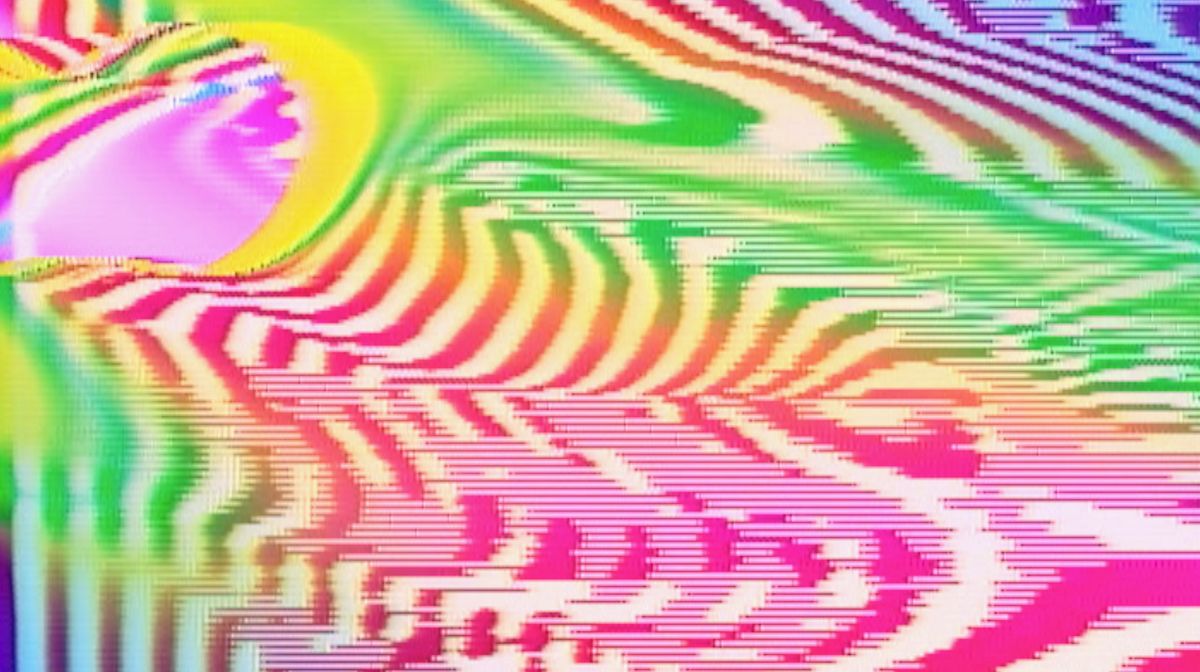
One of my favorite touches to add to a video patch is a very slight amount of video mixer feedback. I keep one of my video synth outputs permanently wired into a video mixer feedback loop for this specific purpose.
Video feedback can have many different looks and slightly different techniques. The pop cultural classic is the echoing movement as seen in the video for Earth, Wind, and Fire's September:

If you take performers out of the feedback loop and work with just light sources, you can get visuals that will be very maze-like, with animation that mimics cellular division or fractal movement.
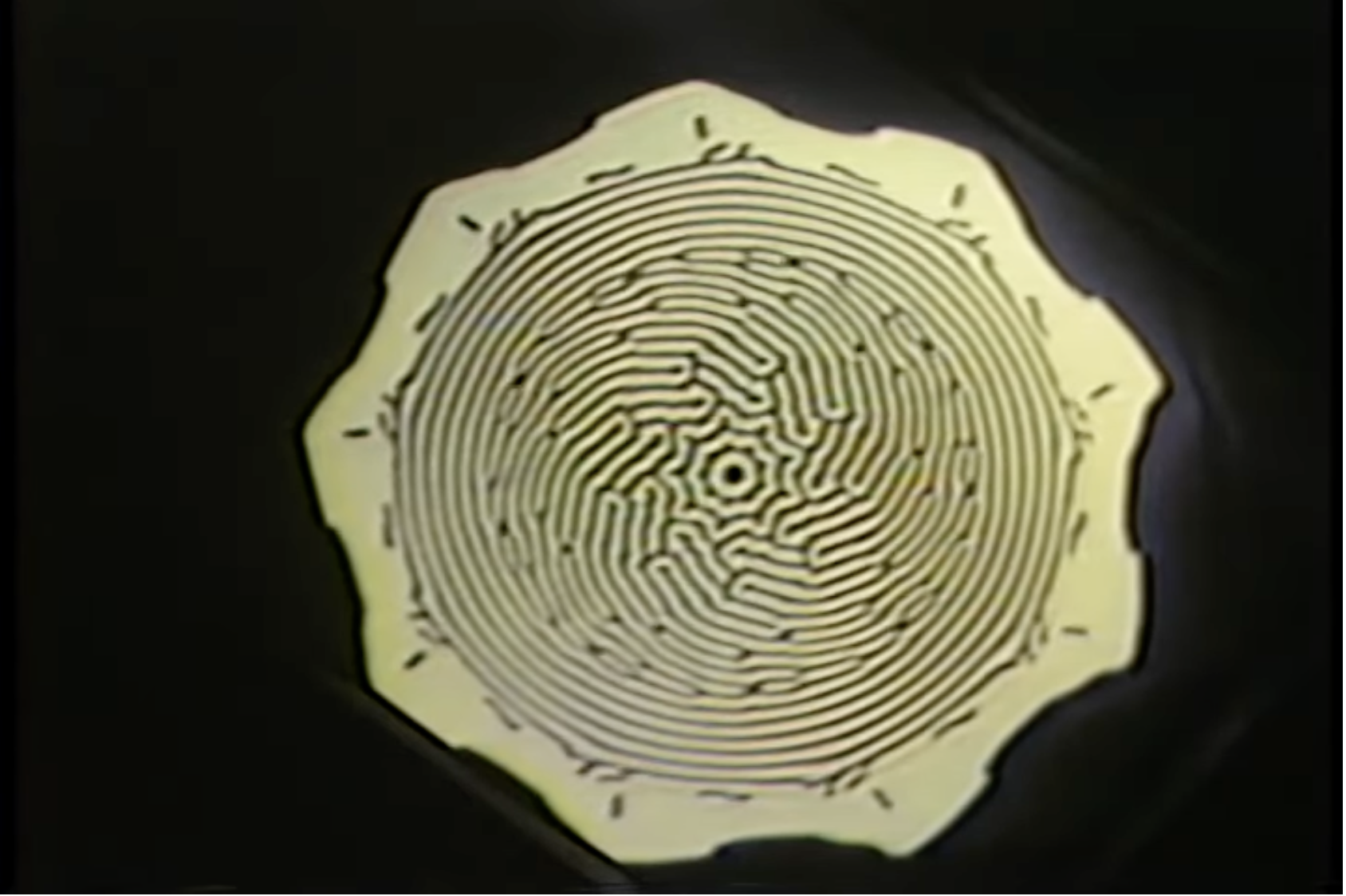
Those techniques are pulled off by pointing cameras at its output (a projection screen, a CRT monitor, an iPad, etc.). No-input video mixer feedback is the same principle but takes the camera out of the equation. You just plug in a cable to its output and plug it into its input.
The Mixers
The thing I really like about video mixer feedback is that each mixer model has a different flavor of feedback. The feedback may even differ from mixer to mixer. I have four hardware video mixers that I use for feedback: a Panasonic WJ AVE-5, an Eidrol V-1, a Roland V-5, and an Eidrol V-4. Each of these mixers definitely has a different flavor of feedback.
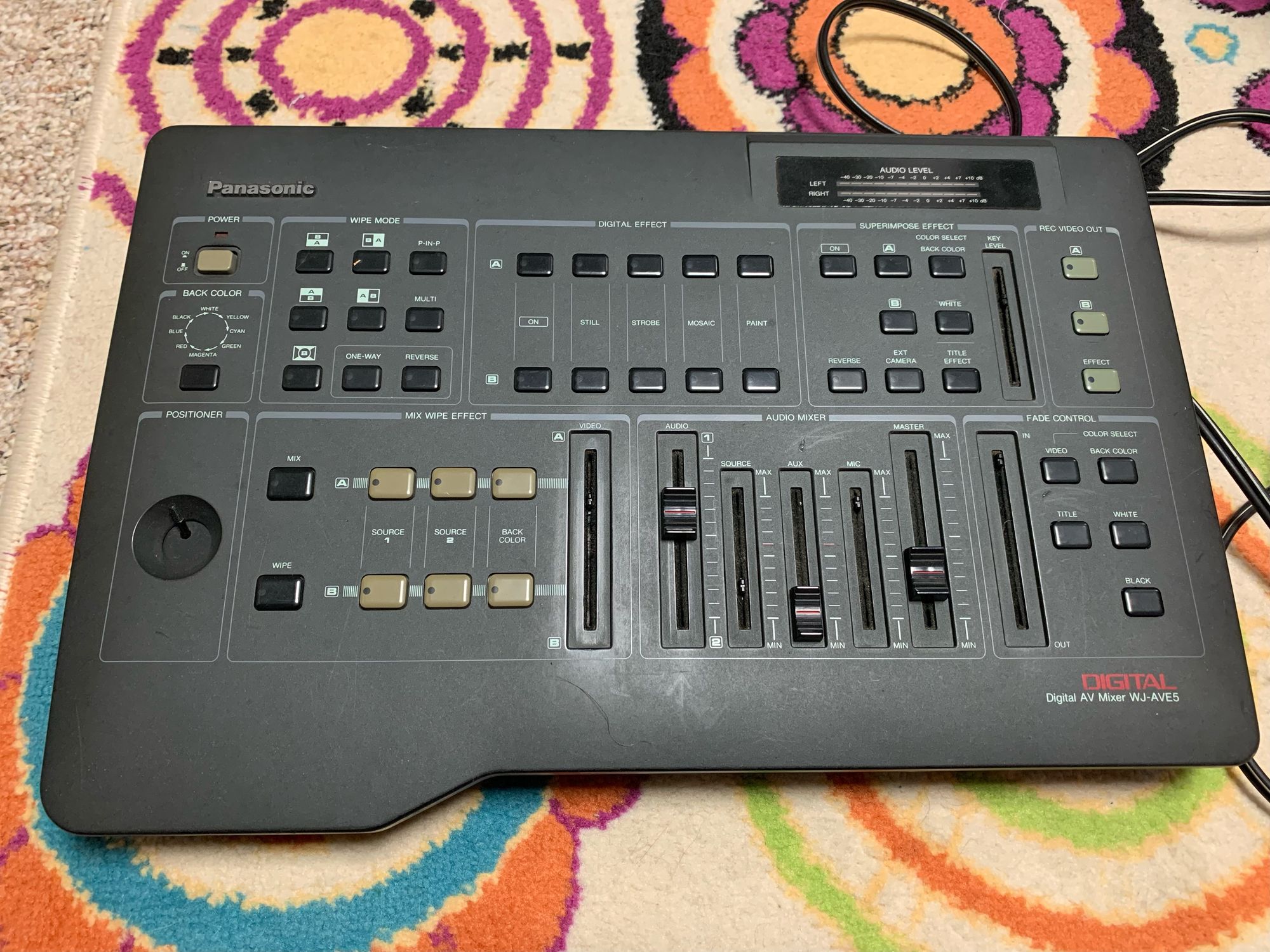
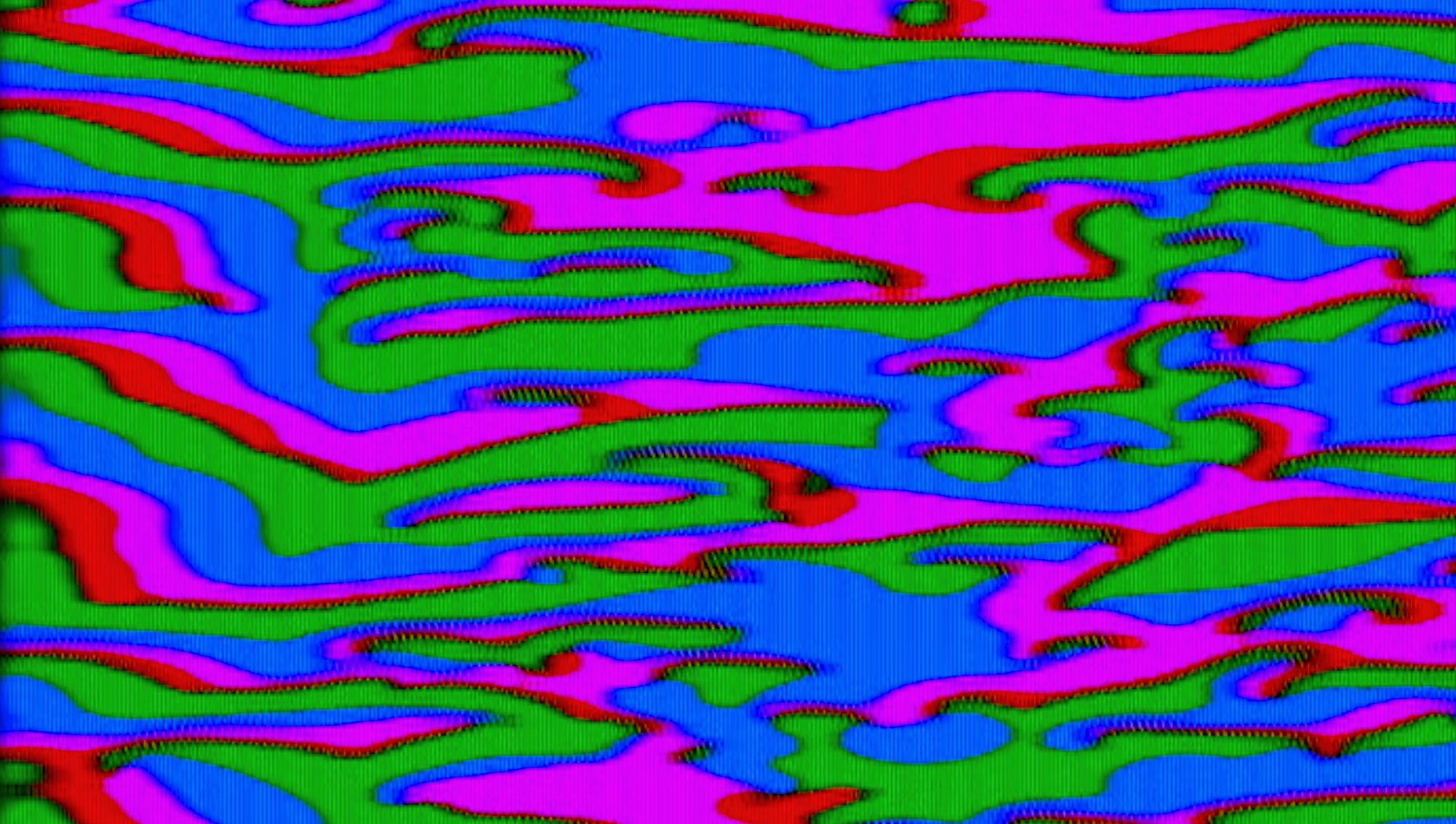
The AVE-5 has a very distinctive, almost chunky swirling feedback. When feedbacking into itself, there is a very fluid dynamics-like red, green, and blue swirl. When other signals are injected into the feedback loop, it can smear and pull the image, like it is in a strong wind storm.
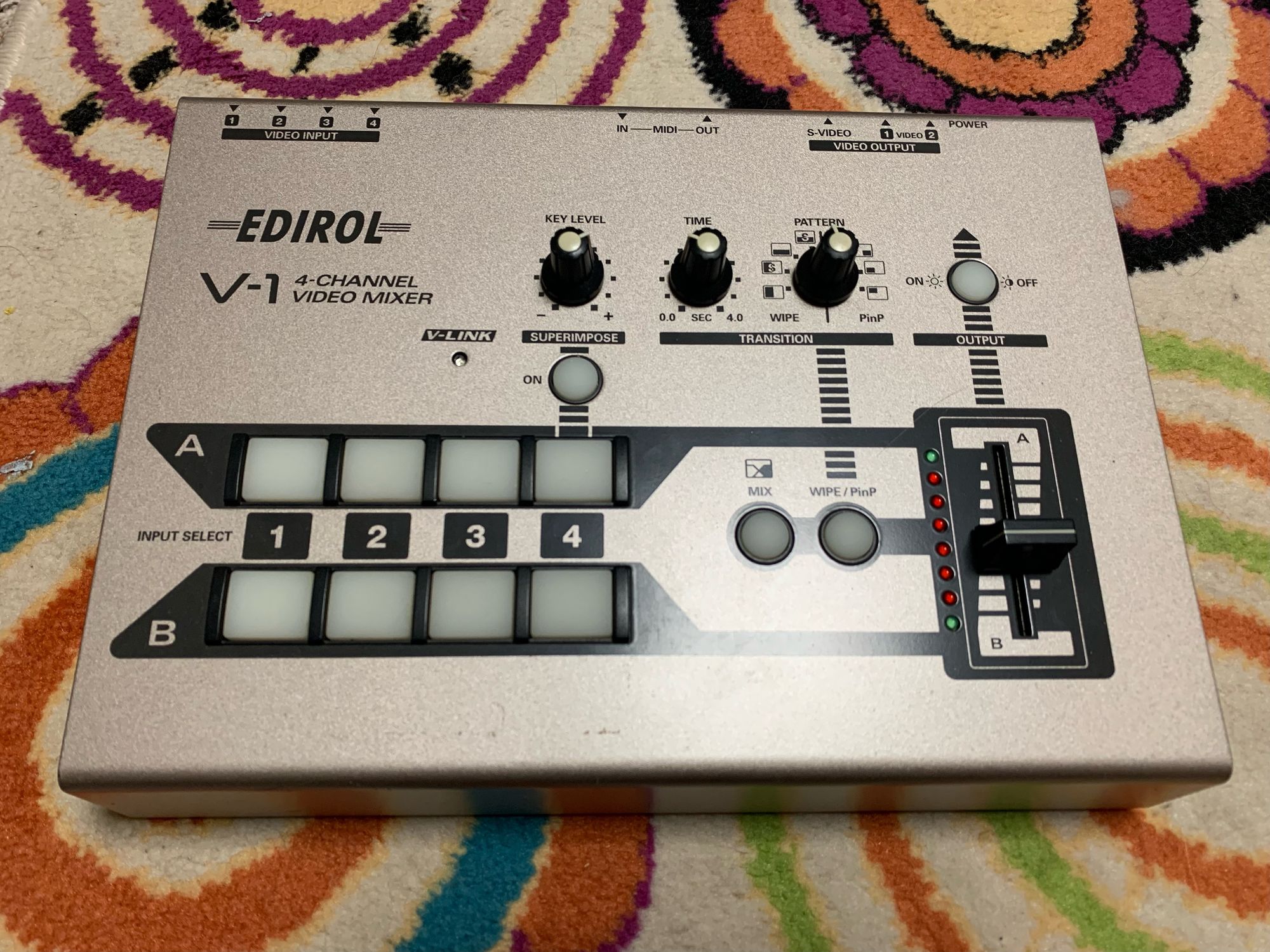
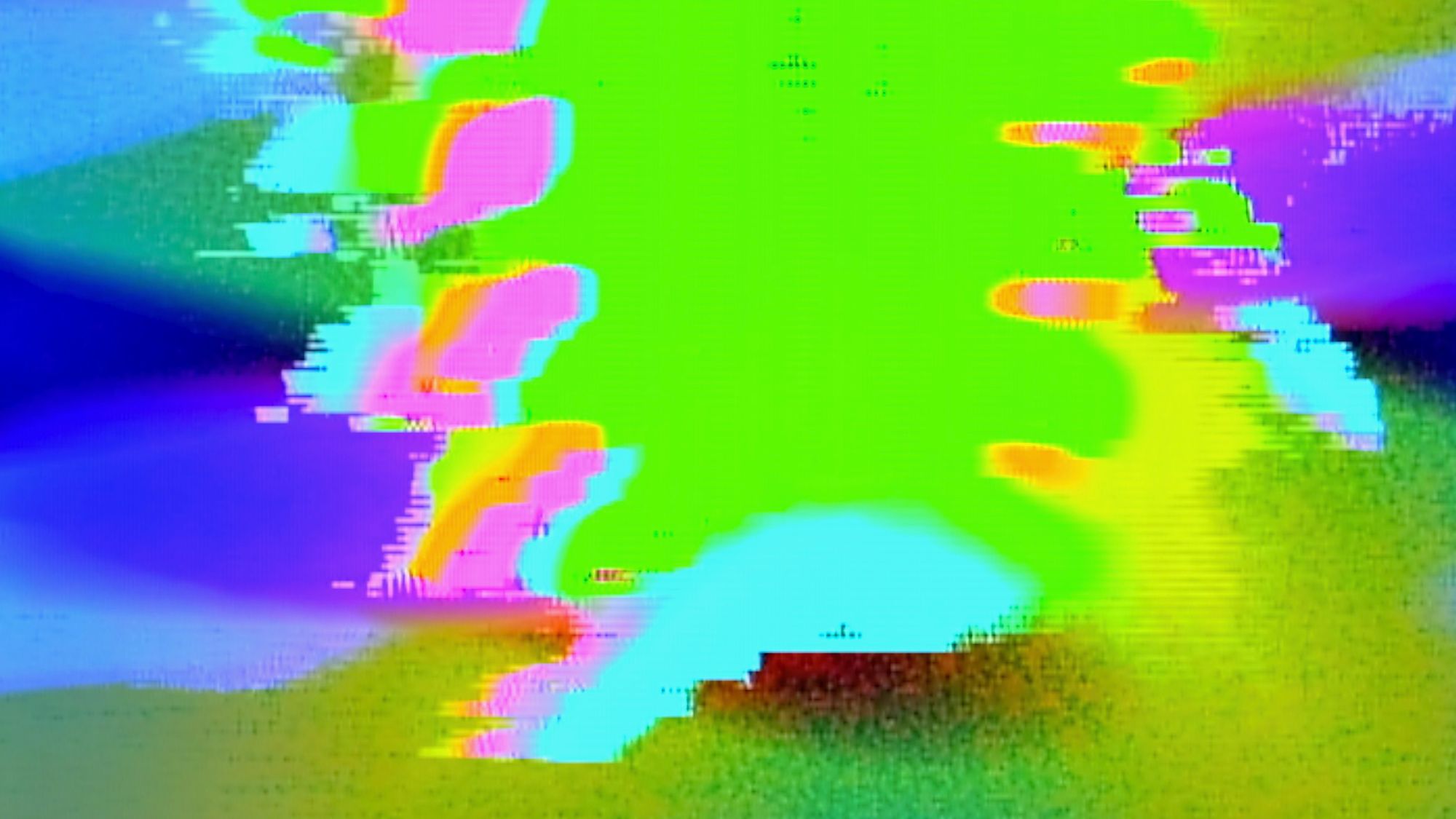
The V-1 was designed for office presentation use. The idea is that you would place black and white printed text in front of a camera and it would composite the text onto another channel as the foreground. As such, its mixing is primarily through a luma key. When fed back into itself, it creates a fantastic rainbow sparkle trail.
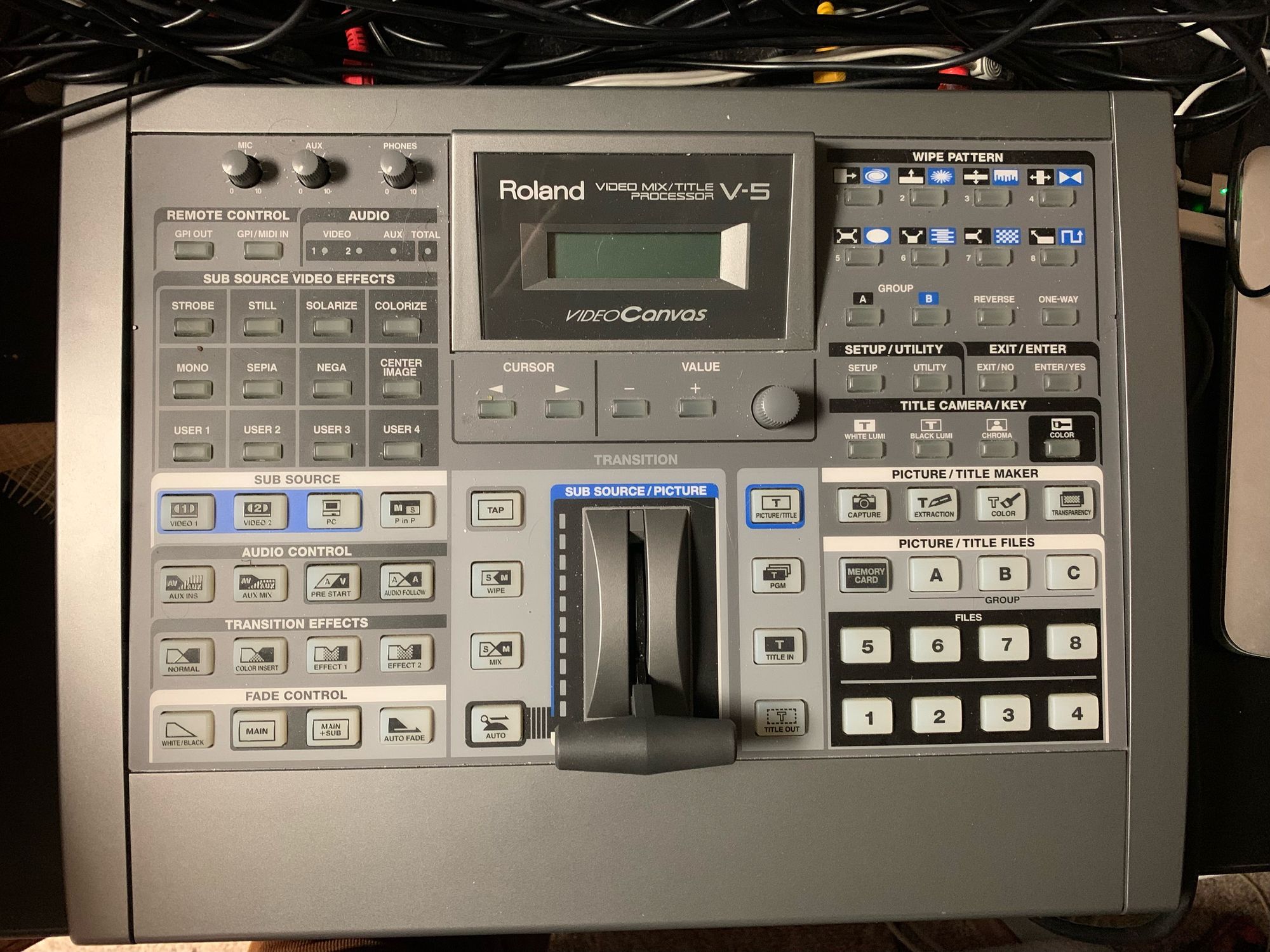
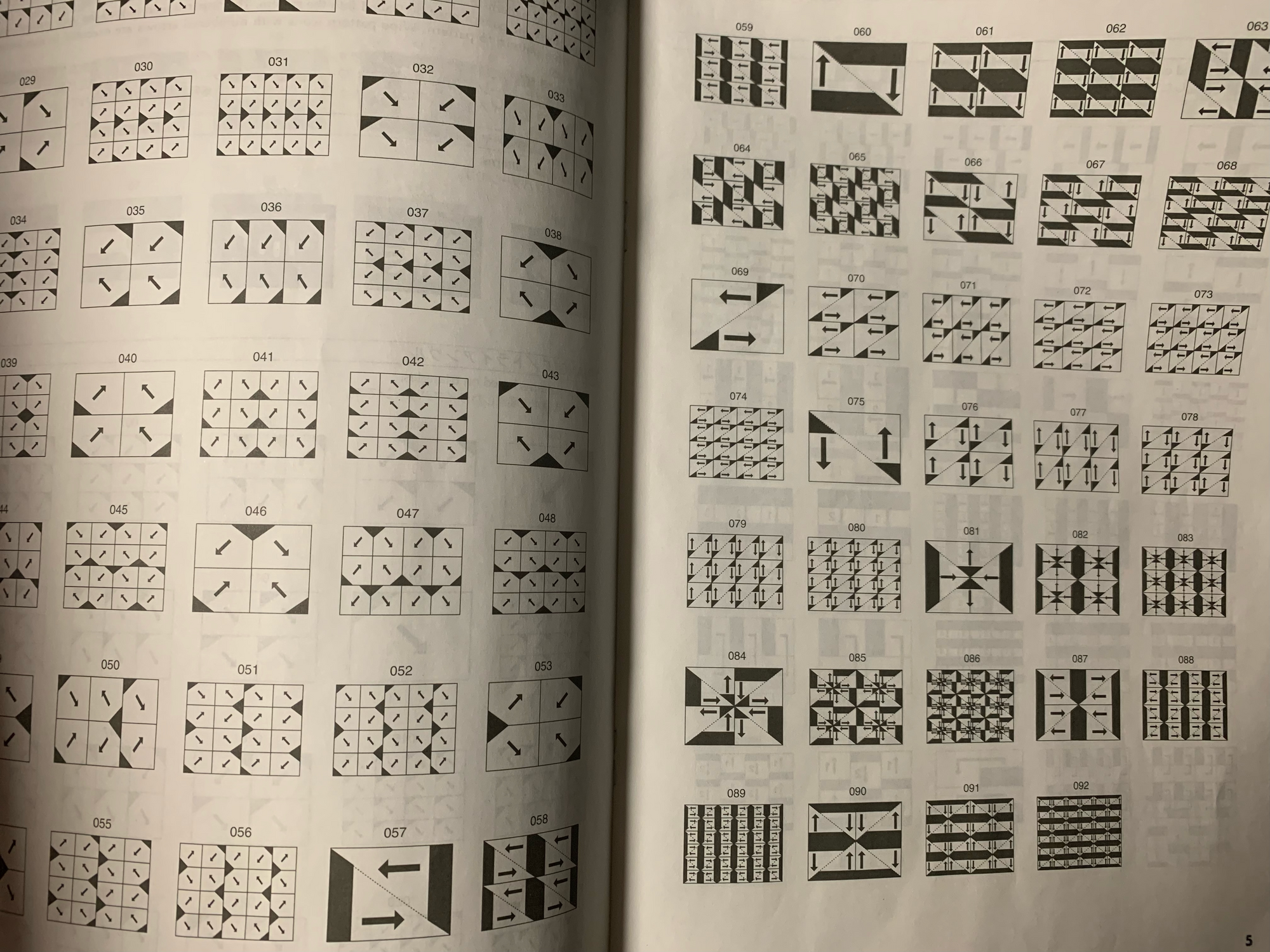
The Roland V-5 is what I currently have my video synth looped into at the moment. The feedback flavor on this is pretty vanilla. It can echo what is injected into it; when pushed hard, it does a good hard key zebra look. My favorite feature of this mixer is the hundreds of wipe patterns you can dial up. It's a great way to throw shapes into the mix.
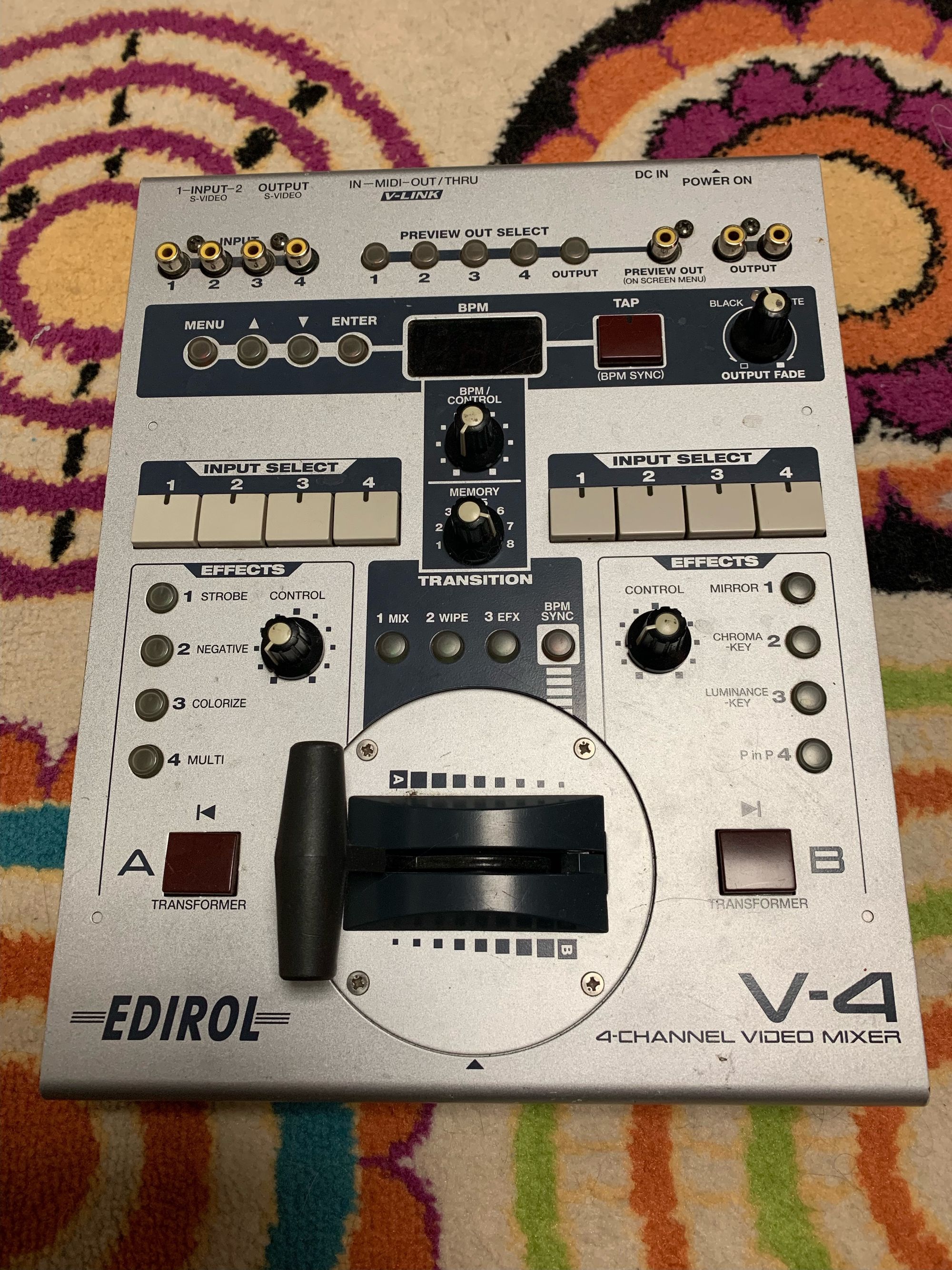
The V-4 is crammed with effects (mirroring! keying! color shifting!) that can be applied within the feedback loop. To be completely honest, I find the menu diving configuration of this machine to be off-putting, so I don't use it as much as I probably should. It can be a powerhouse, though. The luma key feedback looks fantastic. Real-time mirroring and kaleidoscoping effects from this machine are invaluable. I do know that there are people that are able to create wonderful looks with just this guy and a VCR.
In Practice
Most of the time, the amount of feedback that I use is very small. I control the level of the feedback in two places: at the mixer itself (the V-5 has a nice T-bar for this), and in the video synth. To get the mixer signal back into the video synth, I use the simple black and white input on the Video Sync Generator. I plug the converted signal into a channel of Color Chords. The channels with the vertical sliders in Color Chords provide a slight amount of amplification, which can push it the signal over into feedback territory. Generally, I'm not fully blasting it into the signal path; it tends to be slightly backed off.
So what does that look like? It ranges. Pushed hard, there's the zebra striping feedback look. At more subtle settings, it adds a kind of ineffable life to a patch. It could be a slight color shift that moves and changes as the color of the patch changes. It could be suble blurry echos of the main image that gives dimensionality to the patch. On hard keys, it can create a kind of drop shadow effect, separating those elements from the rest of the composition. At very low amounts, it just adds a nice texture and grain to the image–a touch of saturation to a final mix. It's an extremely useful technique to have in your back pocket, even if you're not into the Earth, Wind, and Fire-style echoes.
One of my favorite little tricks is to mix the feedback signal with modulation. As the modulation rises, it'll spike the feedback in stochastic ways, giving you a modulated signal that seems to have a mind of its own.
It can be hard to tame, but feedback is the sparkle in a lot of my patches. It gives a look that is hard to describe, but noticeable when it's missing.